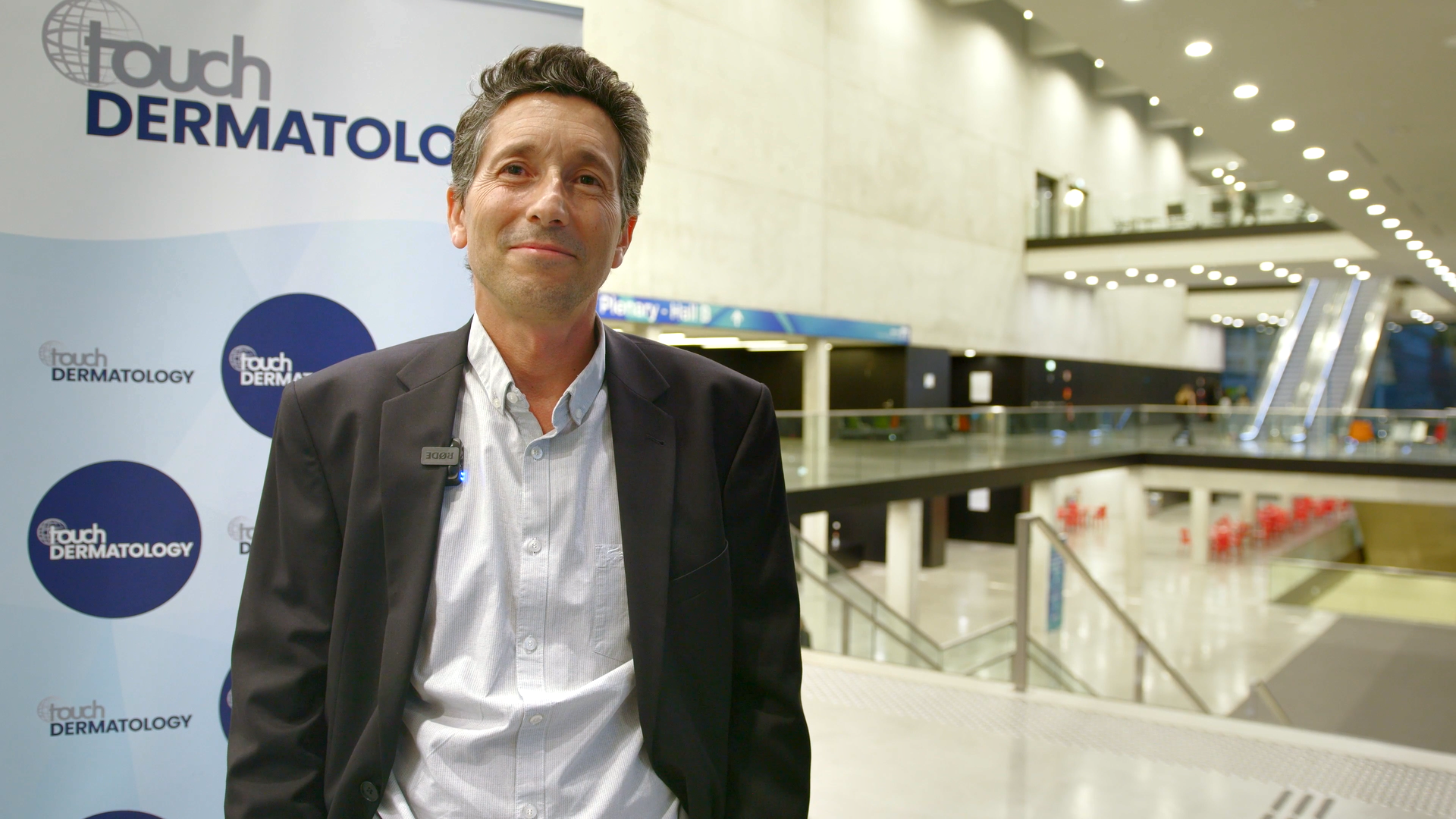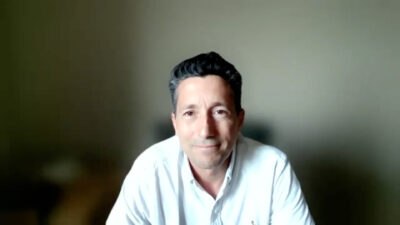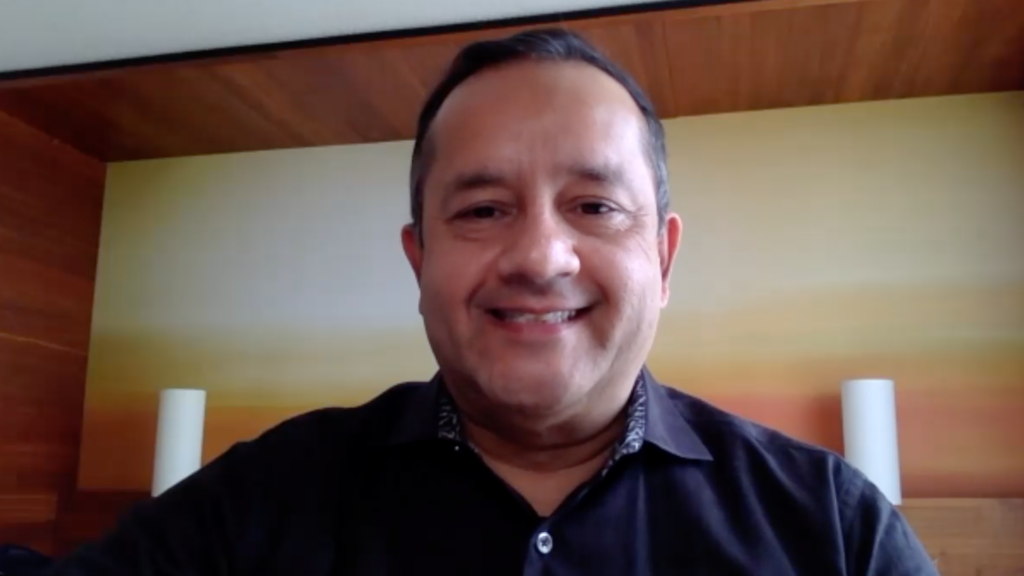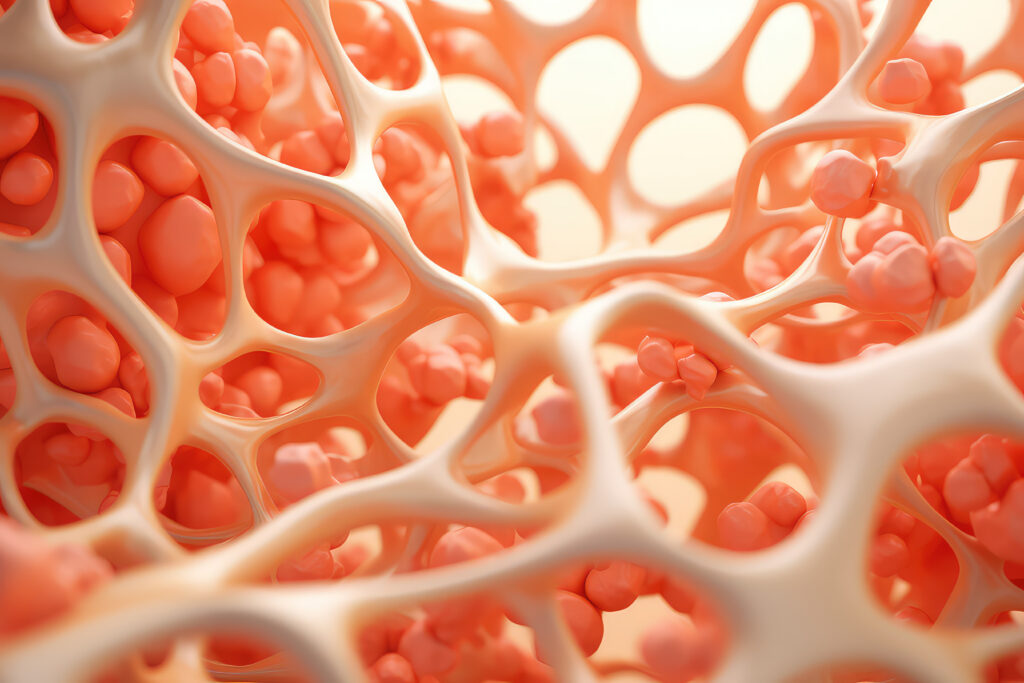Touch Medical Media coverage of data presented at EADV 2023:
Explore some of the key insights from EADV 2023: Prof. Thierry Passeron illuminates pigmentary disorders breakthroughs, Dr Raj Chovatiya unveils atopic dermatitis innovations, Prof. Leonardo Marini sheds light on aesthetic medicine developments, and Prof. Dedee Murrell reveals treatment progress exciting clinical trials and key discoveries in blistering and autoimmune diseases.
Filmed in coverage of the EADV Annual Meeting.
This content was developed by Touch Medical Media and is not affiliated with the European Academy of Dermatology & Venereology (EADV) or the congress.
Transcript:
Thierry Passeron: Highlights in the field of pigmentary disorders
I have to say, it’s an exciting moment for pigmentary disorder and vitiligo. We have confirmation that ruxolitinib cream, now approved, shows long-term safety and efficacy. Additionally, there’s promising data on upadacitinib, porvacitinib, and other JAK inhibitors from a positive phase 2 study. So, we’re hopeful this will progress to phase 3 in the coming months, which is thrilling for patients worldwide suffering from vitiligo.
Raj Chovatiya: Highlights in the field of atopic dermatitis
Some of the most compelling data presented here, both in poster and oral formats, explore different mechanisms beyond the IL-4/IL-13 axis traditionally associated with atopic dermatitis. We’re seeing innovative research on the roles of IL-2 and IL-18, as well as the OX40/OX40 ligand system. These elements of the immune system, which may operate upstream of IL-4 and IL-13, could potentially be powerful treatments for our patients.
Leonardo Marini: Highlights in the field of aesthetic dermatology
This is a significant conference, akin to the American Academy of Dermatology and European Academy of Dermatology meetings. It’s challenging to have an overview of all the advancements, but from discussions with experts, it’s clear that combination techniques will be a highlight. Understanding how to combine treatments and the sequence of these combinations will be crucial, not just for enhancing the skin’s appearance but also for preventing skin cancer. Proper skin treatment can significantly reduce the risk.
Photodynamic rejuvenation is one such treatment that’s gaining acceptance due to its minimal downtime and maximal benefits. The skin looks better, and it helps keep harmful cells in check. This approach is likely to shape the future of dermatology.
Dedee Murell: Highlights in the field of blistering diseases and autoimmune diseases
Regarding the conference, I’m not aware of any new trials related to the topics I mentioned being presented at the late-breaker sessions. What excites me are the advancements in epidermolysis bullosa, with two new treatments recently approved—one by the FDA. This includes BeVAC collagen seven topical gene therapy, which Peter Marinkovich discussed in a plenary talk here. The company behind this therapy plans to use the herpes simplex virus backbone to deliver other genes topically for different genetic diseases. This method doesn’t integrate into the nuclear DNA but operates in the cytoplasm, avoiding the potential gene therapy risk of cancer by not disrupting genomic DNA sequences. It’s an extraordinary innovation, worthy of a Nobel Prize, in my opinion. The second treatment, the Oleo gel birch bark extract approved by the EMA last year, has shown to reduce the reliance on expensive dressings. Further results will be presented this afternoon.
Disclosures: (in order of how the speakers appear)
Thierry Passeron has been a consultant for Almirall, Abbvie, Amgen, Astellas, BMS, Celgene, Galderma, GSK, Incyte, Isocell, Janssen, LEO Pharma, Lilly, MSD, Novartis, Pfizer, Sanofi-Genzyme, SUN pharma, UCB pharma; received grant/research support from Abbvie, Almirall, BMS, Celgene, Incyte, Isocell, LEO Pharma, Lilly; and has received honorarium from Almirall, Abbvie, Amgen, Astellas, BMS, Celgene, Galderma, GSK, Incyte, Isocell, Janssen, LEO Pharma, Lilly, MSD, Novartis, Pfizer, Sanofi-Genzyme, SUN pharma, UCB pharma.
Raj Chovatiya discloses advising, consulting, and/or speaking for AbbVie, Apogee Therapeutics, Arcutis, Argenx, ASLAN Pharmaceuticals, Beiersdorf, Boehringer Ingelheim, Bristol Myers Squibb, Cara Therapeutics, Dermavant, Eli Lilly and Company, FIDE, Galderma, Genentech, GSK, Incyte, Janssen, LEO Pharma, L’Oréal, Nektar Therapeutics, Opsidio, Pfizer Inc., Regeneron, RAPT, Sanofi, and UCB.
Leonardo Marini has nothing to disclose in relation to this video interview.
Dedee Murrell discloses serving on advisory boards for Argenx, Sanofi, Principia, Janssen, Lilly, Almirall, Roche, Cocreator PDAI, BPDAI, MMPDAI, Abbvie, Novartis, Kineska, Amryt, Castle Creek, Rheacell, and Shire.





